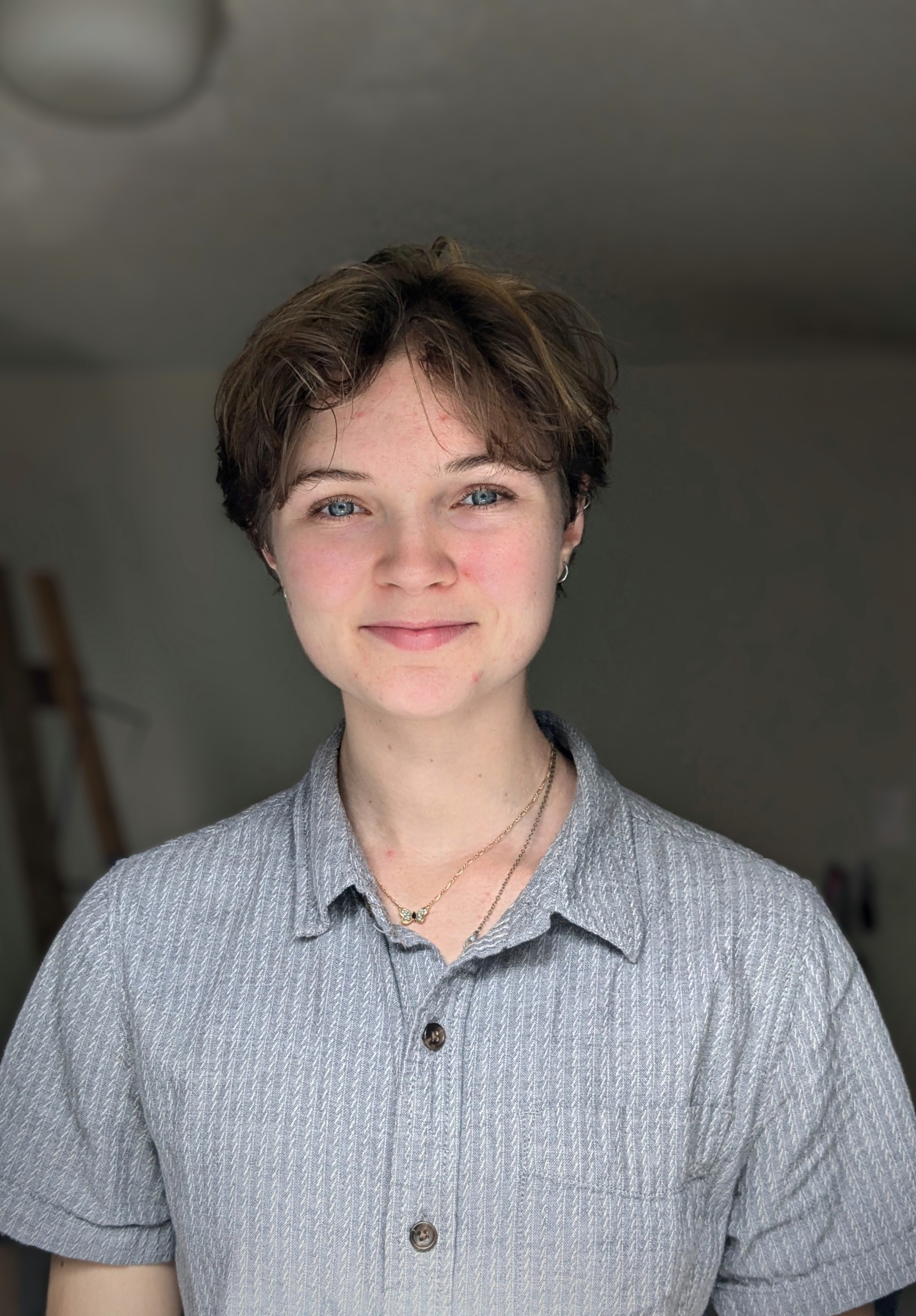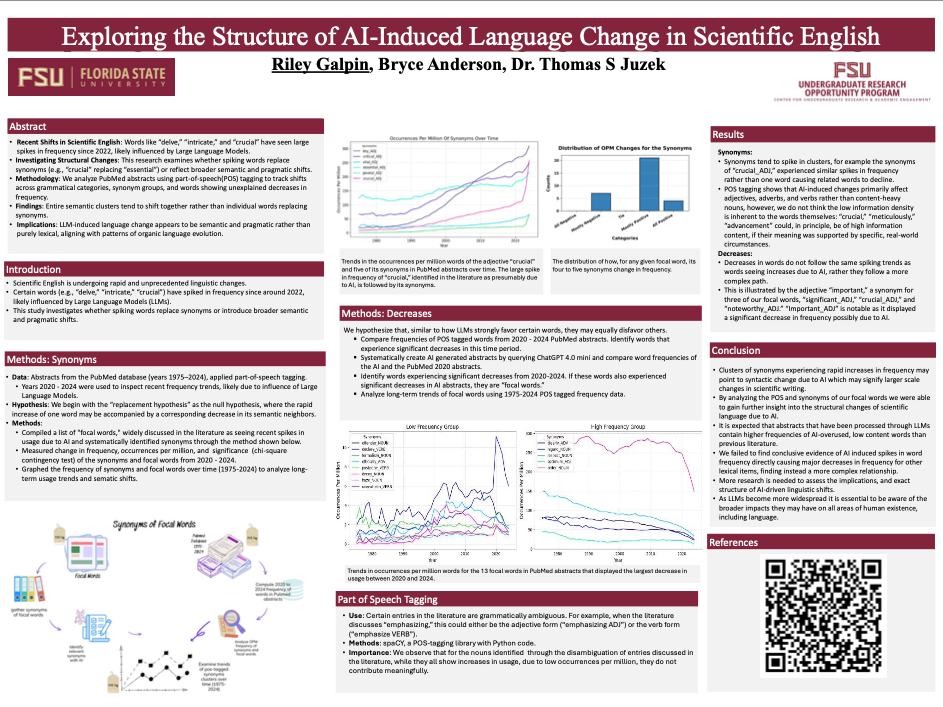Research Symposium
25th annual Undergraduate Research Symposium, April 1, 2025
Riley Galpin Poster Session 4: 3:00 pm - 4:00 pm/ Poster #177

BIO
Riley Galpin is a second year at FSU majoring in Pure Math and Computer Science with interests ranging from fine arts to linguistics and AI.
Exploring the Structure of AI-Induced Language Change in Scientific English
Authors: Riley Galpin, Dr Thomas S JuzekStudent Major: Mathematics, Computer Science
Mentor: Dr Thomas S Juzek
Mentor's Department: Modern Languages and Linguistics Mentor's College: College of Arts and Sciences Co-Presenters:
Abstract
Scientific English has undergone rapid and unprecedented changes in recent years, with words such as “delve,” “intricate,” and “crucial” showing significant spikes in frequency since 2022. These changes are widely attributed to the growing influence of Large Language Models like ChatGPT in the discourse surrounding bias and misalignment. However, apart from changes in frequency, the exact structure of these linguistic shifts has remained unclear. The present study addresses this and investigates whether these changes involve the replacement of synonyms by suddenly ‘spiking words,’ for example, “crucial” replacing “essential” and “key,” or whether they reflect broader semantic and pragmatic qualifications. To investigate structural changes, we include part of speech tagging in our analysis to quantify linguistic shifts over grammatical categories and differentiate between word forms, like “potential” as a noun vs. as an adjective. We systematically analyze synonym groups for ‘spiking words’ based on frequency trends in scientific abstracts from PubMed. We find that entire semantic clusters often shift together, with most or all words in a group increasing in usage. This pattern suggests that changes induced by Large Language Models are primarily semantic and pragmatic rather than purely lexical. Notably, the adjective “important” shows a significant decline, prompting us to systematically analyze decreasing lexical items. Our analysis of “collapsing” words reveals a more complex picture, which is consistent with organic language change and contrasts with the patterns of the abrupt spikes. These insights into the structure of language change contribute to our understanding of how language technology shapes human language.
Keywords: Linguistics, Artificial Intelligence, Large Language Models


